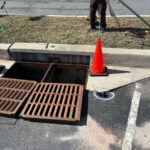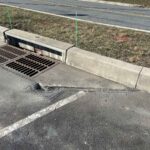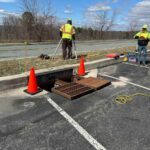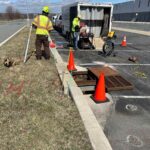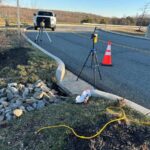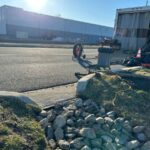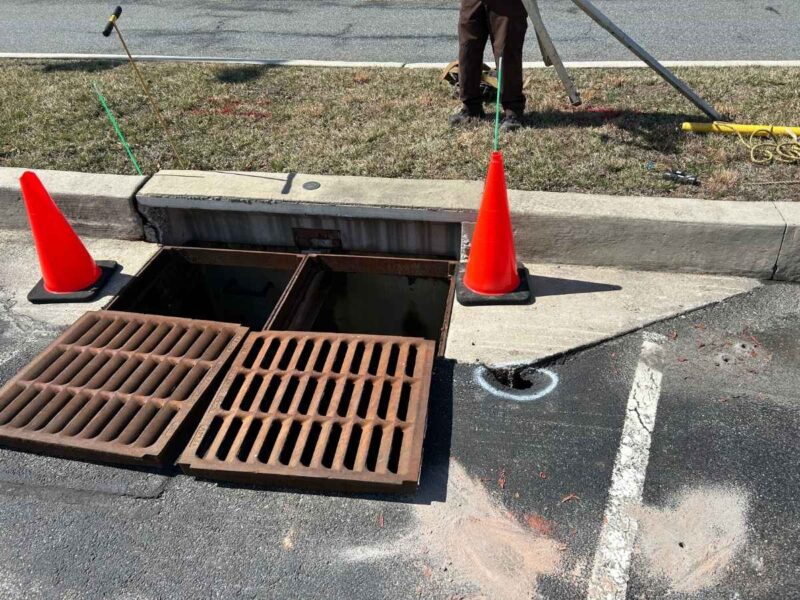Problem
A Maryland distribution center faced ongoing soil erosion and settlement issues due to an aging series of storm drainage structures. Previous repair attempts had not addressed the root cause, and therefore did not stop inflow, infiltration, and subsidence, causing the structures and the surrounding asphalt to sink because of void formation and instability.
Solution
To reinforce the storm drain inlets and surrounding structures without disturbing utilities, USG implemented a strategic approach. Via polyurethane Injection, USG injected geotechnical polyurethane at multiple depths to fill voids, stabilize soil, and seal leaking joints. The expanding, high density polyurethane accomplished this by infiltrating the gaps in the joints, effectively sealing them, and then pushing against the concrete drain inlet to fill the voids and densify the loose soils.
The presence of buried utilities, including power, water, and communication lines, added complexity to the project. Ensuring a safe and effective stabilization solution without disturbing essential infrastructure was a top priority. To overcome this, utility locates were conducted by USG, mapping power, water, and communication lines to prevent accidental damage. CCTV inspections were utilized to assess the condition of the storm drain system both before to identify leaks and cracks contributing to soil loss, and after to ensure the lines were not blocked by the expanding polyurethane.
Results
To reinforce the storm drain inlets and surrounding structures without disturbing utilities, USG implemented a strategic approach. Via polyurethane Injection, USG injected geotechnical polyurethane at multiple depths to fill voids, stabilize soil, and seal leaking joints. The expanding, high density polyurethane accomplished this by infiltrating the gaps in the joints, effectively sealing them, and then pushing against the concrete drain inlet to fill the voids and densify the loose soils.
The presence of buried utilities, including power, water, and communication lines, added complexity to the project. Ensuring a safe and effective stabilization solution without disturbing essential infrastructure was a top priority. To overcome this, utility locates were conducted by USG, mapping power, water, and communication lines to prevent accidental damage. CCTV inspections were utilized to assess the condition of the storm drain system both before to identify leaks and cracks contributing to soil loss, and after to ensure the lines were not blocked by the expanding polyurethane.

